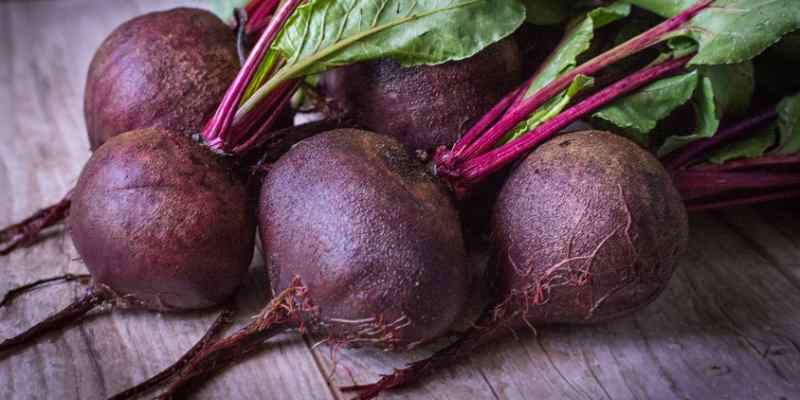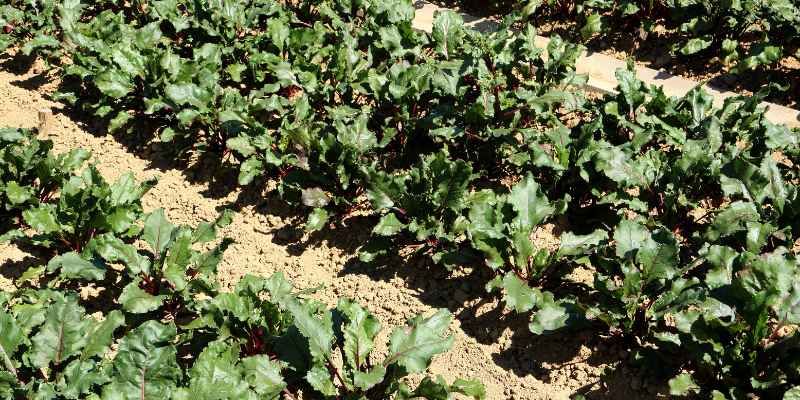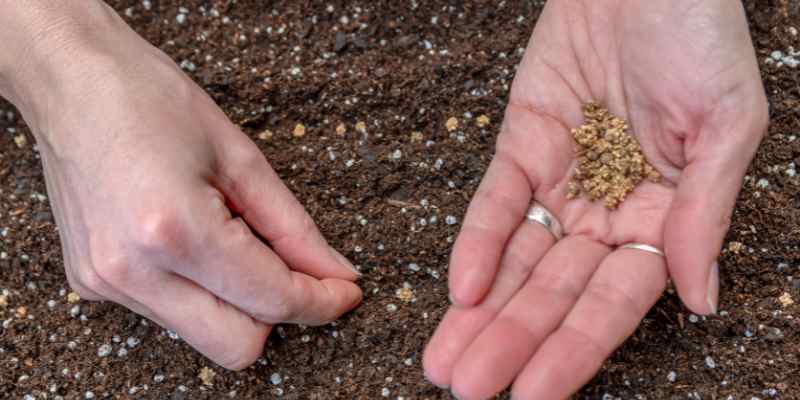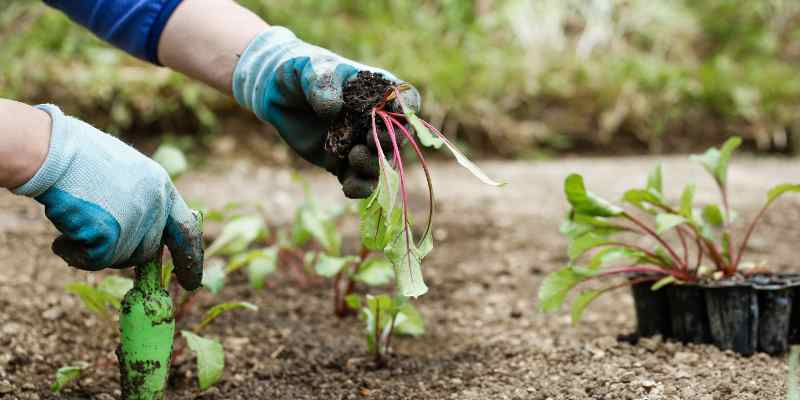A root vegetable whose young shoots are also edible, the beetroot (Beta vulgaris) is a staple in vegetable gardens. Red, but also yellow, white or bicoloured like Chioggia, round or elongated, it's a vegetable that's easy for beginners to grow, thanks to its large seeds. Beetroot also ticks all the boxes for health benefits, whether eaten raw or cooked. In this tutorial, we'll show you how to sow them successfully!

When to sow beetroot?
Sow directly in the ground between March-April and mid-June at the latest, as soon as the soil temperature reaches at least 8°C, or for early sowings in seed trays in February (these are more difficult to succeed and require more care). Be careful with beetroot not to sow too early in the season, as it dislikes cold... which can cause it to bolt instead of producing the expected plump root.
Harvest takes place after 12 to 16 weeks, or three and a half months after sowing. For direct sowings, the harvest will therefore take place between July and October-November.
Where to sow beetroot?
As a root vegetable, beetroots prefer fertile, deep and loose soil, especially if you're planting elongated varieties. Another essential is well-drained soil, but beware of overly sandy soils which will require more regular watering in summer. Clay soils don't bother them.
For exposure, choose a spot in the vegetable garden in full sun, but not scorching.
Sowing is usually done directly in the ground, but sowing in seed trays is also possible if you want an earlier harvest from May onwards.
Its favourite companions in the vegetable garden are green beans, onions and lettuces!
Finally, sowing in pots and growing on a balcony is possible, but in this case choose pots at least 30 cm deep, and only round beetroot varieties.



How to sow beetroot?
Sow directly in place, in the ground, as soon as the soil begins to warm up.
- Soak your beetroot seeds in lukewarm water for half an hour to facilitate germination
- Prepare the soil: loosen the soil with a cultivator, then level with a rake. If possible, add some nourishment for these greedy plants: well-rotted compost or manure or a little wood ash, or even a strawberry fertiliser, also rich in potash.
- Using a garden line (facultative), draw furrows 3 cm deep, spaced 25-30 cm apart
- Sow in rows, one seed every 4-5 cm

- Cover with a thin layer of soil to fill the furrow
- Firm down with the back of the rake
- Water with a fine-rose watering can and keep the soil moist until germination, which usually takes around 10 days, depending on the climate. Once the seedlings have emerged, reduce watering to avoid excess moisture.
How to thin out beetroot?
Beetroot is one of the vegetables that needs thinning*, as the seeds germinate in clusters (they are technically glomerules containing 3 to 5 seeds each). This involves regularly spacing out the young plants after a month, when they have developed four to five leaves and are about 5 cm tall.
* Some beetroot varieties are "monogerm" and do not require thinning, such as 'Moneta' or 'Solist' for example.
- Carry out the task in the early morning or late afternoon on an overcast day.
- Keep only the most vigorous plants and replant them every 10-20 cm. Use the unselected plants to add to a young shoot salad!
- Maintenance until harvest: it's important to hoe or weed the soil between the rows to prevent weeds that would slow their growth. Watering should be regular and generous, otherwise you risk ending up with misshapen beetroots or bolting. Water at the base to limit the risk of disease. Mulch properly with straw, grass clippings, flax pales, etc., which helps maintain soil moisture and reduce weeds.

Harvest time finally arrives! Don't let your beetroots become fibrous, which can happen if you leave them in the ground too long. The beetroot slightly protrudes from the ground and is then about 10 cm tall (but you can harvest them earlier if you prefer smaller beetroots). Lift and pull each beetroot carefully. Remove as much soil as possible.
Store beetroots in a crate filled with sand, as you would with carrots, in a dry and cool place (ideally in a cellar). This way, they can be stored for several months.
My tip: use beetroot leaves to make pesto, a quiche or a vegetable stir-fry.
































Comments